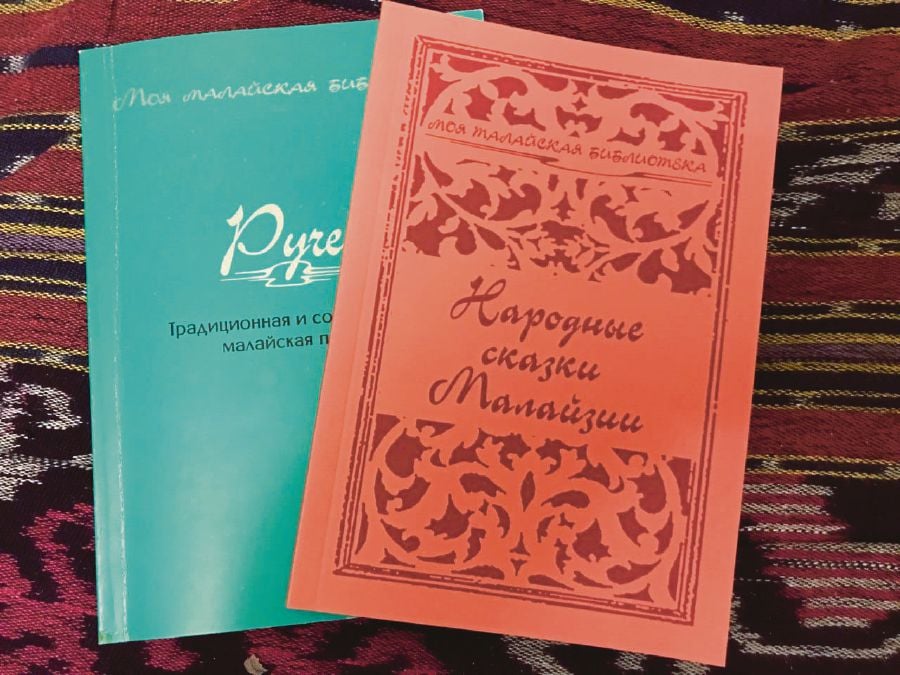In the late 1990s, Boris Borisovich Parnikel (1934-2004), a well-known Orientalist and founder of the Nusantara Society, decided to publish a series of books under the general heading My Malay Library.
The first book in the series, The Brook, was published in 1996 and devoted to traditional and modern poetry of Malaysia.
It included samples of two popular Malay syair (Syair Ken Tambahan and Syair Siti Zubaida, which were translations of Nina Gabrielyan).
It also included 59 quatrains-pantun, as well as poems by 31 modern poets, including Usman Awang, A. Samad Said, Kassim Ahmad, A. Latif Mohidin, Baha Zain, Muhammad Haji Saleh, Siti Zainon Ismail, Kemala, Zurinah Hassan, A. Gafar Ibrahim, T. Alias Taib, Rahman Shaari and Jihaty Abadi.
The recent offer by the National Federation of Writers' Organisations of Malaysia (Gapena) to participate in the translation of folk tales of Malaysia, retold and illustrated by Malaysian writers and artists, for a bilingual series of books published at the end of last year, has prompted me to continue Parnikel's idea and publish a second book under the heading My Malay Library, a collection of fairy tales.
Having received the kind permission of the authors through Gapena executive secretary Norazimah Abu Bakar, I prepared this edition for a total of 21 fairy tales, which included four more that were in my archive — three about the cunning mousedeer (Sang Kancil) and one about Si Tanggang, who betrayed his parents.
It is during childhood that we love the magic of fairy tales. And they accompany many of us throughout our life. Why?
"Because, even though the fairy tale is a lie, there is a hint in it, a lesson for good fellows!" (according the words of Russian poet Alexander Pushkin).
In childhood, we are more attracted by magic, adventure, and the discovery of new and unknown worlds.
As we get older, quite unexpectedly at times, we behave or try to do exactly the same as the wonderful fairy tale characters that we read about in childhood.
As time goes on, we gradually learn to deal with reality, by being honest, kind and fair.
But it does not matter what language the heroes of the fairy tales speak, be it Russian, English or Malay. Thanks to skilful translators, we are able to read them in our native language.
The wider the range of magical discoveries we had in childhood through reading these tall tales, the more "good" would remain in us when we became adults.
Otherwise, how do we know that when defending our world and home, we need to be brave like the Seri Siam character from the fairy tale, Dragons of Lake Chini?
Or, that true love is not being afraid of difficulties and will overcome all obstacles, and most importantly, requires sacrifices as in the fairy tale Seven Requirements; that we can achieve the desired result with patience like in the fairy tale The Longest Story in the World; and, that evil will still be punished and virtue will triumph in The Snail Prince and How the Tiger Became Striped.
The book has received very positive reception from critics.
Prominent journalist Tatiana Firsova wrote: "Translated fairy tales are not only an acquaintance with the virtues and vices of people, with magic and adventure. It is also an expansion of the world, the beginning of the foundations of knowledge about its diversity and dissimilarity.
"In this sense, the fairy tales of Malaysia introduce us to the exoticism of life, completely different from life in our country, and tell about its amazing nature and fauna. I hope that both children and adults will like the new book of Malaysian fairy tales".
The writer, writing from Russia, is a former lecturer of University Malaya





